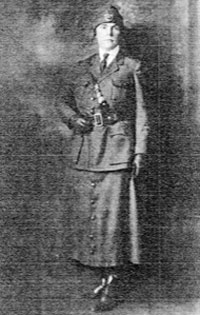History of Silver Penny Farm

1800 BC – 1800 AD
Long before Sonoma County was known for Wine Country, it was home to thousands of Native Americans, including those of the Pomo, Coast Miwok, and Wappo tribes. Joe Sanchez, a 74-year-old Coast Miwok elder, traces his ancestry to a once thriving village called Péta Lúuma, which in the Miwok language means “sloping ridge. Many places in Sonoma County still impart this 4,000-year-old Native American history, including Tolay Lake in Petaluma, a significant spiritual site thought by many California tribes to have healing powers.
sonomacounty.com/history
General Mariano Guadalupe Vallejo’s
The property was part of General Mariano Guadalupe Vallejo’s 66,000 acre ranchero, “acquired” from the native Alaguala Nation in 1834. There was a huge demand in San Francisco for fresh food to feed the Gold Rush population which was growing very quickly with the discovery of gold in northern California and Vallejo helped to fill that demand. The land was cultivated to supply grain for his expanding cattle operation.
The Town of Lakeville
In 1859, William Bihler purchased the 8,000 acres, and drained Tolay Lake in order to plant potatoes and corn. The town of Lakeville grew around this farm and attracted Irish immigrants to the area who worked the farms and established a close-knit community. The town of Lakeville thrived in the late 1800’s because a steamboat stop near our property was developed into a transit hub for people headed north by stagecoach. This is evidenced by the businesses that supported the travelers including a hotel, dance hall, post office, a school, a race track and more than one saloon. (If time permits, enjoy a beer at Ernie’s Tin Bar, an historic speakeasy on the corner of Stagecoach Road and Lakeville Highway).
Edith White
Katherine Rhinehart, county historian, writes about the White Family of Lakeville:
“I first learned about the farm while researching Edith White, daughter of Josiah and Annie (Daniels) White. Edith was born on the property in 1886 and lived there full-time until 1894, when the family moved to Alameda. She was a graduate of UC Berkeley. During World War I, Edith was a captain in the Pacific Coast Woman’s Motor Corps. She brought her own Cadillac to France! Sadly Edith died in a hospital in Caumont, France, from meningitis.”
Katherine has several articles about Edith and has gathered some information on her siblings – some of whom show up as residents of the Lakeville property during the 1920s, 1930s, and 1940s.
1960’s
A family from San Francisco, the Goldies, purchased Silver Penny Farms in the 1960’s and used it for many years as a country get-away. They were beloved by the Lakeville community and helped fund the new fire station across the street.
William Randolph Hearst III moves in…
Patty Hearst’s uncle, William Randolph Hearst III, purchased the property in the early 1970’s to serve as a place to hide his sister after she had been kidnapped by the Symbonese Liberation Party. It was the Hearst family who named the farm Silver Penny after a beloved children’s poetry book. They developed the gardens and spent a bit of time living in the house, using the water tower as an office and art studio.
The Church takes over
In 1986 the Hearst family donated the property to the Archdiocese of San Francisco. The Church turned the property into a retreat center which is why there are so many bedrooms in the mansion and six cottages on the grounds. It operated as a retreat center until the late 2005 when a ranching family, the Cardoza’s, purchased it from the Church.
The Cardozas
From 2005 to 2019, Rita and Marvin Cardoza farmed the Silver Penny property, along with the 3000 acres that is now Tolay Lake Regional Park.
Sue & Nan
Sue Conley and Nan Haynes bought Silver Penny Farm from the Cardoza family for the purpose of creating workforce housing and opening the Big House to conservation groups for meetings and retreats. The land is currently feeding pastured sheep from the Gilardi family who live across the road between Lakeville Highway and the Petaluma River . We also host honey hives of honey bees for Sola Bee. The company collects the honey and transport the bees to nearby orchards for pollination in the spring




